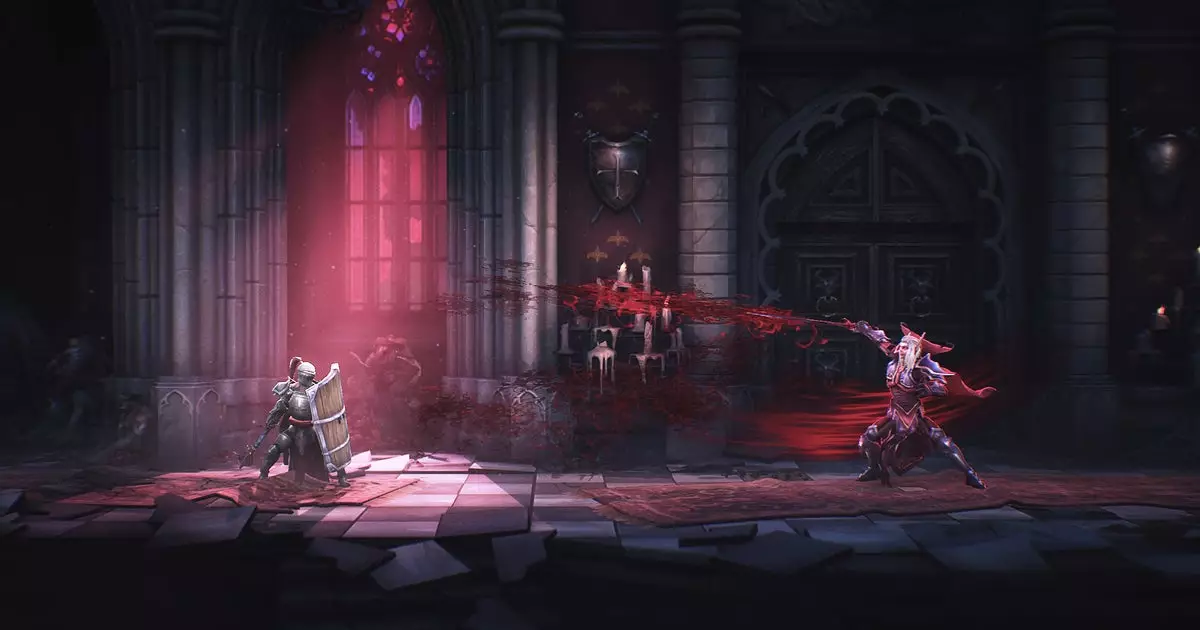Mandragora: Whispers Of The Witch Tree is on the horizon, a curious blend of genres that has captured the interest of gamers worldwide. Developed by Primal Game Studio, this upcoming title is described as a “2.5D Soulsvania,” a term that may raise eyebrows among purists while also hinting at the game’s captivating duality. Set against a harrowing backdrop of grotesque night creatures, the game promises an adventure filled with electrifying combat, hazardous landscapes teeming with foes, and a narrative deeply rooted in dark fantasy.
The setting of Mandragora is a character in itself, where skull-laden landscapes and ominous spires stand testament to a world lost to darkness. The aesthetic, described as “painterly,” offers players a chance to explore environments that are both beautiful and grotesquely captivating. Each scene vividly transports players into a realm overwhelmed by decay and despair—elements that reinforce the game’s tone and themes. This meticulous attention to visual detail is noteworthy; it suggests that the developers prioritize an immersive experience, allowing players not just to traverse a world but to feel the weight of its history.
As players encounter oversized creatures and feral beasts, they will find that the combat mechanics will likely require both finesse and strategy, a hallmark of the Souls-like genre. Players will have the opportunity to create sparks, cleave enemies in twain, or even unleash fire upon the relentless hordes. This dynamic approach to combat, paired with the vivid and oppressive atmosphere, sets the stage for deeply engaging gameplay. However, beneath this layer of ambition lies a risk: will the game’s mechanics match the beauty and depth of its visuals?
At the heart of Mandragora lies a narrative crafted by Brian Mitsoda, a name that carries weight in the world of video game storytelling. Known best for his work on the original Vampire: The Masquerade – Bloodlines, Mitsoda’s involvement in this project brings with it expectations of rich character development and compelling choices. His recent insights into narrative design emphasize the importance of authenticity in storytelling; he urges developers to create worlds that feel organic and interconnected.
Players will face daunting decisions that promise to shape the game’s unfolding story. The plot sets the stage for a world where humanity has retreated behind walls, enslaved by its own fears and ignorance, while dark entities roam freely under the cover of night. This narrative context asks players to consider themes of agency and resurrection. Can players reclaim joy and purpose within a world built on despair? Mitsoda’s guidance underscores the significance of relatable characters, suggesting that even a cliché plot can become engaging when driven by compelling personas.
One of the most exciting features of Mandragora is the promise of diverse gameplay options through character classes and skill trees. Players can delve into these “nodular” skill trees—each segment likely tied closely to various combat styles or special abilities, reminiscent of a detailed and chaotic work of art. This allows for an engaging level of customization that can lead to unique builds and personalized gameplay experiences.
Moreover, the incorporation of a traveling caravan where players can recruit artisans hints at a robust crafting system. This element can significantly enhance gameplay, offering choices that affect both character progression and the overall efficacy of gameplay strategies. As players populate their caravan with specialists, they will not only build their arsenal but will also deepen their involvement in the game’s lore, presented as they interact with their artificers’ stories and backgrounds.
As the April 17th release date approaches, the excitement surrounding Mandragora will likely intensify. Yet, the challenges are formidable—creating a gameplay experience that successfully marries its combat mechanics with an immersive narrative. With Mitsoda at the helm of storytelling, hopes remain high for a compelling art form that invites players into a palpable world of darkness and discovery.
In the modern landscape of gaming, players are not merely seeking challenging gameplay; they desire emotional experiences that resonate long after the game is completed. Mandragora has the potential to become such an experience if it successfully realizes its artistic vision and narrative ambitions. Will it earn its place among the memorable titles of the genre, or will it become just another shadow in the night? Only time will tell.

